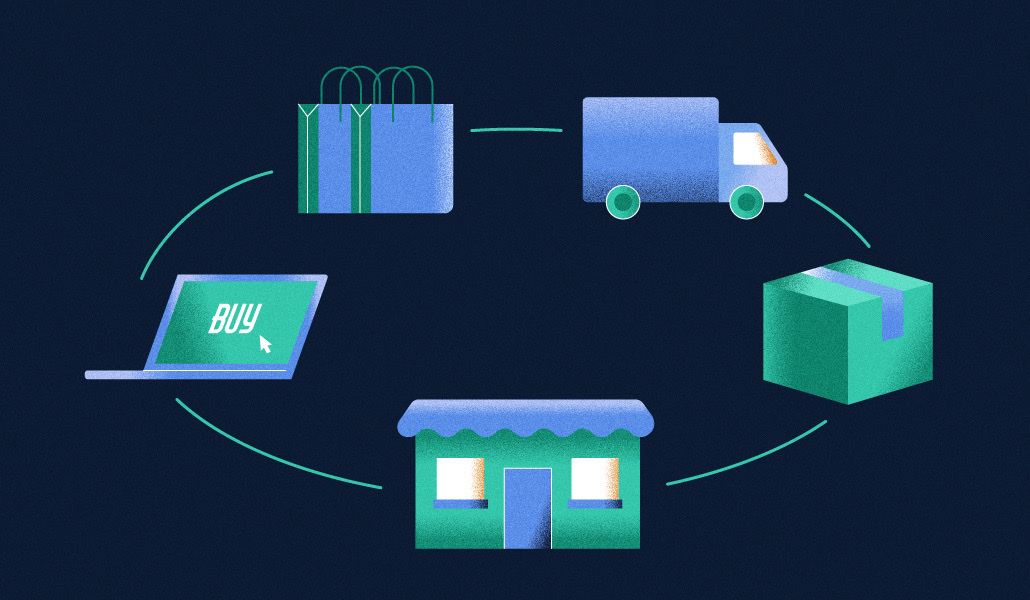‘I saw we were buying incorrectly’: How ModCloth is using AI to inform product decisions

When Anh Vu-Lieberman, the interim CEO of the apparel marketplace ModCloth, took over the reins in January, she used machine learning to conduct a “deep dive” of the business’s buying decisions.
Through artificial intelligence, she found that ModCloth — which has its own brands, as well as other brands — was not purchasing the correct amount of clothes in certain sizes. “I saw that we were buying incorrectly, in every single category,” she told Modern Retail. “We were under-buying the small sizes, over-buying the plus sizes… Now, we know exactly how to buy.”
Before Vu-Lieberman came to ModCloth, the company “was much more of a traditional merchant,” she said. Now, under its new parent company Nogin, ModCloth is integrating emerging technologies into its operations, marketing and overall customer experience. The changes are already affecting business results, with AI personalization accounting for a little more than 11% of ModCloth’s revenue, Vu-Lieberman shared.
AI and machine learning have become major industry-wide buzzwords over the past year. While AI does present some dangers — it can be costly, result in job displacement and brings up security concerns — many retailers and brands are using the tool to speed up operations or improve efficiency. ModCloth is one company that is integrating the technology and already seeing good results.
ModCloth is testing out AI in a variety of ways, said Vu-Lieberman, who is also the vp of conversion rate at Nogin. When a new customer visits ModCloth’s site, they are presented with an array of best-selling items. As they hunt around the site, however, ModCloth tweaks recommendations, based on what types of products that customer has clicked on. These recommendations are compiled in ModCloth’s “Personalized Picks” page that shows “everything in your size that you’re likely to buy,” Vu-Lieberman said. That page has a 2x higher conversion rate than regular pages.
For returning customers, ModCloth bases recommendations on order history, as well as current activity. ModCloth does this, Vu-Lieberman said, because people sometimes buy items in the wrong size. If a customer previously bought a shirt in extra small, but is now considering that shirt in small, ModCloth will start showing other shirts in small.
ModCloth regularly tweaks what products a customer sees, based on their geographic location. Customers in the Northern Hemisphere and the Southern Hemisphere, for instance, will see different items, because their weather patterns are different. In one test, those shown season-appropriate clothing in Australia and New Zealand had a 45% higher click-through rate. “It definitely has a big impact on how people shop, for sure,” Vu-Lieberman said.
ModCloth will also use AI for email and text communications (think ChatGPT), or to switch up when and how it shows a customer their cart. For the latter, “if you’re still in discovery mode, I can show you the ‘view cart’ button,” Vu-Lieberman said. “But, if you’re returning and you already know what you’re looking for, then I will just show you the checkout.” Changing the cart results in a “5% to 10% impact” in conversion rate, Vu-Lieberman said.
More apparel marketplaces and companies are integrating AI into their businesses. Retailers from Nike to Warby Parker offer virtual try-on technology, and resale platforms like The Real Real and StockX use AI to detect counterfeits. Walmart and Amazon rely on AI and computer vision to locate items in warehouses, and Frito-Lay and Home Depot use AI in their supply chains.
These moves are crucial to success in the 21st century, says Kassi Socha, director analyst at Gartner. “When it comes to merchandising, we know that retailers that don’t implement critical AI-led merchandising processes now to support their businesses’ transition into a more consumer-centric viewpoint will not survive,” she told Modern Retail.
Many retailers point to AI as problem-solving solutions. ModCloth, for example, relied on AI when rolling out a limited-edition collection of Gunne Sax clothing at the end of June. According to Vu-Lieberman, customers were mistyping “Gunne Sax” in the search bar “at least 50% of the time,” and ModCloth’s AI was able to detect this and bring up the correct results. The efforts paid off, and ModCloth racked up $145,000 in Gunne Sax sales in the first 24 hours.
Still, for all of the successes with AI, many companies are hesitant to use the technology. According to Gartner, about one-third of retailers say they have used AI in at least one of their internal processes. “Many retailers right now are operating merchandising with a patchwork quilt type of solution,” Socha said.
“They’re still heavily dependent on configuring Excel to perform all these time consuming, super complex calculations and planning processes,” she continued. “So integrating AI, or thinking about the ways that AI can help speed up the operations and find efficiencies within multiple systems… will help retail leaders make timely critical decisions that could be what makes them successful — or if they don’t, what makes them fail.”

